Facing Failure
Some go so far as to claim that failure is the key to success, but things are a little trickier when you’re faced with failure of your own.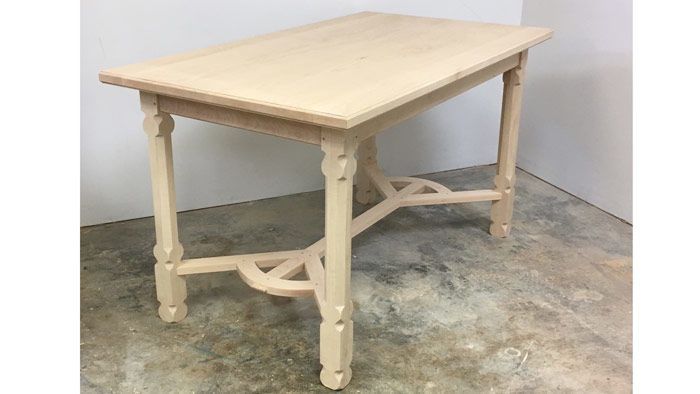
Failure is hot—or so it seems, based on the number of articles, blog entries, talks, and social media posts on the topic over the past couple of years. The usual coverage goes something like this:
Failure is an inevitable part of the journey to success. Those who succeed do so because they don’t allow themselves to quit when they fail. Instead, they learn from the experience and keep going.
Some go so far as to claim that failure is the key to success.
All well and good—especially when you’re the one dispensing this advice to someone else. Things are a little trickier when you’re faced with failure of your own.
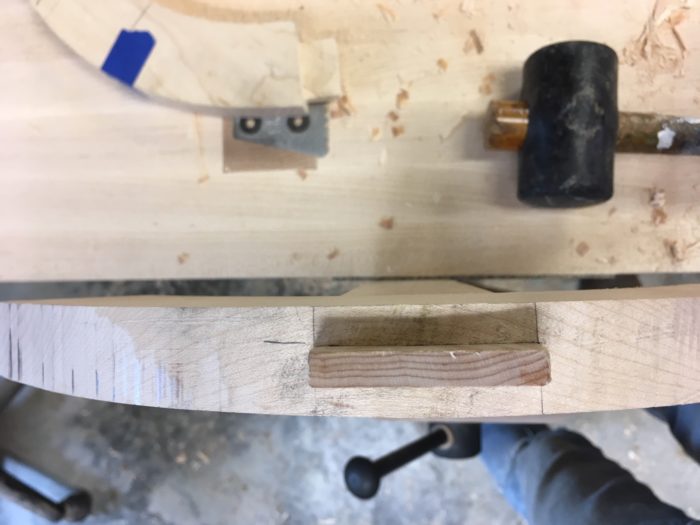
Take my most recent job, a hayrake table. I built this one in curly hard maple, because one of my suppliers had a couple of beautiful, wide boards that were just right to make the top. Of course, maple is one of the less forgiving species; it resists compression, and there’s no busy grain to distract the eye. So I found myself taking longer than expected on the chamfered legs, each of which has 16 lamb’s tongues. I tested every mortise-and-tenon joint for the stretcher, finessing the fit, and assembled the whole thing dry with drawbore pins. All good. But when I glued it up, pulling the shoulders tight with oak pegs, one of the joints didn’t quite fit. There was a thin, wedge-shaped gap at the shoulder—barely noticeable, and certainly not enough to affect the strength of the joint, but maddening all the same, especially after the care I had taken to get things just right.
I moved on to the apron, checking the fit of each tenon and following up with a test run in clamps. Good to go. I put it together with a slow-setting glue. The design of this table doesn’t allow for parts to be assembled in sections; you have to assemble the four legs, stretcher, and apron rails at the same time, going around the table in sequence while gently increasing the pressure on strategically placed clamps lest you cause the whole puzzle to collapse. I was working alone. And this time I found that the apron shoulders on one end would not line up; the end appeared to be out of square. The rounded feet make it pretty well impossible to check the diagonals. I knew I’d cut the shoulders square because I had checked them. So I angled the clamps, which usually does the trick.
This time it didn’t. I couldn’t apply sufficient pressure in the right spots due to the clamps on the long sides. I added an extra clamp nearby, cranking it as tight as I could. That appeared to make it better. But when I removed the clamps the next morning, I saw the gap. Oh, the pain. Mortifying.
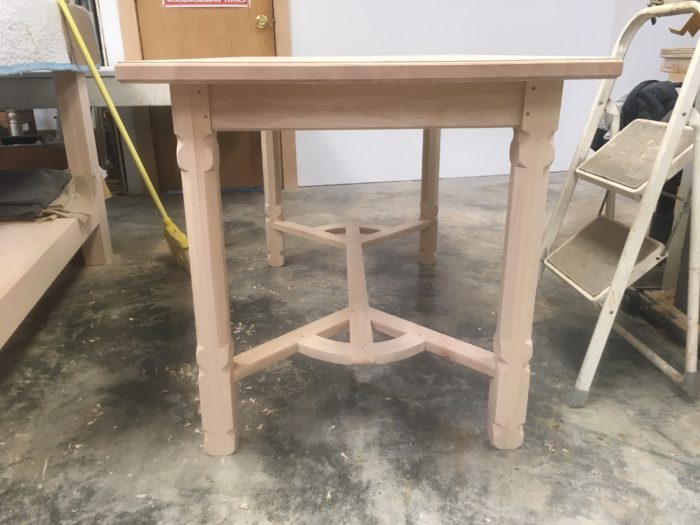
How to proceed? I could cut the apron rail out and remake it. That would add more time to the job…and for what, exactly? I thought about this question all day, beating myself up while I started the next job on the schedule. You call yourself a furniture maker? Go back to school. I thought about all the Instagram posts with perfect dovetails and crisp tenon shoulders, all the ways in which people publicize their successes and brag about their uncompromising standards, presenting an image of mastery in the self-curated realm of social media.
Finally I moved into constructive thought. I analyzed what I would do differently next time to avoid the same problems, and then I wrote to the customer, attaching a high-res image of the damning apron-to-leg gap and asking whether he would like me to remake that rail. Sure, it would take more time, but it would relieve me of the thorn in my side.
“I’m not at all concerned about a 1/32” gap,” he wrote back. “Part of the beauty of handmade items, even from the best craftspeople is that perfection is unobtainable. Whether when brand new or over the years of actual usage. I think of the way people view hand-cut dovetails today and have come to the conclusion that we’re trying to mimic machines as the highest aspiration of craft. Yet the glory age of hand-cut joinery was when people made a living cutting joinery. They had to eat.”
Or, to paraphrase a couple of my employers at workshops in England during the 1980s, “Nancy, get over yourself.”
That evening I took my husband into the shop to look at the table. We had to look for the gap but found it pretty quickly thanks to the contrast between dark space and white maple. He sent me a picture of the eighth lesson in the Tao Te Ching, which I’m sharing with you in case it may be helpful next time you find yourself questioning the value of your existence when faced with a hairline gap in a joint or a dust mote in a film finish.
The highest good is like water.
Water gives life to the ten thousand things and does not strive.
It flows in places men reject and so is like the Tao.In dwelling, be close to the land.
In dealing with others, be gentle and kind.
In speech, be true.
In ruling, be just.
In business, be competent.
In action, watch the timing.No fight: No blame.
(Lao Tsu, Tao Te Ching, translated by Gia-Fu Feng and Jane English. 1972, Vintage Books.)
So here’s my list of suggestions for facing “failure.”
- There’s as much value in humility as there is in justified pride.
- Look at the big picture. Cultivate perspective. How many people crossing an ocean or a desert in search of a better life died today on their journey?
- Learn to distinguish between failure and imperfection. If the imperfect table you build is beautiful and serves its purpose, should you really be thinking in terms of failure? Really, how messed up is that?
- Don’t allow your sense of self worth to rest on an internalized version of your online presence. And don’t compare yourself with the perilously limited slice of their existence that others make available through social media.
Nancy Hiller is a professional cabinetmaker who has operated NR Hiller Design, Inc. since 1995. Her most recent books are English Arts & Crafts Furniture and Making Things Work, both available at Nancy’s website.
More on FineWoodworking.com:
- Consulting With Prospective Clients – Nancy Hiller
- Marketing for Woodworkers: Shows, festivals, and exhibitions by Nancy R. Hiller with Michael Fortune
- Nancy Hiller’s Reality Check(list) – If you’re thinking of turning your passion into a profession you should take a deep look at what is involved in running a legitimate business.




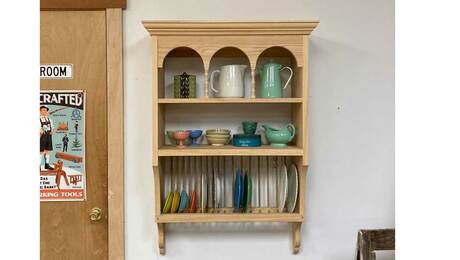





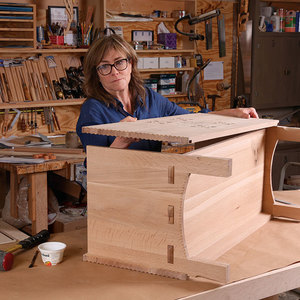












Comments
Nice one Nancy. I would just add, 'always try to be bigger than the things that stress you'.
Nancy, you're my hero.
Handmade implies care was taken to choose quality materials, to bring out the best appearance by presenting and blending attractive grain patterns, and to spend time carefully applying final finishes making the work a valued piece to the end user. A barely noticeable 1/32" gap is the proof of that handmade input validating the overall quality of the piece. I'd say "well done"!
Hi Nancy. I've had some failures and think I should have done or do better to get results like the projects I see in Fine Woodworking. But then I think that what I'm seeing could be the last of many attempts and failures to get things picture perfect. I've never seen any information about the process.
Great advice that I hope to heed and carry with me in all that I do.
Nancy,
This quote is from Jonathan Livingston a Buddhist teacher that my wife, son and I follow, it is most often misquoted as from The Buddha but, it isn't. It comes from a modern day human. I hope it helps you in the future. Todd
I went to Lane Tech high school in Chicago where Woodworking 101 was a requirement. I was soon coming into class early to construct some of the projects Mr. Brown challenged me with. I always made 2 tables or 2 chairs. He and the school got to keep the best ones and I got to keep what was usually the first one. Now when I build anything, I build 2 or even 3. I didn't pursue my passion then for woodworking as I got into the family business of ink, paint and plastic pigment dispersions, although I always had a project with wood going on. It took 4 or 5 strip boats to figure out how to make one from scratch, including the design, chemistry, etc. I'm blessed that I live on a 5 acre wood lot in rural northern Illinois that supplies most of my oak, ash, hickory, maple, locust, walnut & cherry, so when (not if) I screw up, I can do it over, sometimes more than twice until I get it right.
Perfect. Thank you.
Yes, absolutely--the way to get one perfect job is to make more than one! However, working in multiples when your commission is for just one item is not typically feasible for most of us who make a living from furniture making; we have constraints on the time, money, and materials we are able to invest in a given job--even when we're willing to invest more (sometimes much more) than we will be paid for. Note that this post is for the Pro's Corner blog, not for a more general audience (though all are welcome to read it). The editors here asked me to write specifically with professionals in mind, so it is written from the perspective of a woodworker who has been making her living as a custom furniture and cabinetmaker since 1980 for other woodworkers who face similar challenges in earning a livelihood this way. Thanks for your comment.
I am an imperfect woodworker. I get things measured as closely as possible, do my best work, and am often thwarted by what the wood wants to do, despite my best study and attempts at craftsmanship. So this article hits home for me. Thanks :)
I’m not stalking you, I really just read the next title that interested me. It was this. Perhaps failure is a hot topic in these precious times where failure is fairly novel. Perhaps our lack of perspective when viewing our work’s flaws has something to do with a fear of letting clients down, which can only be mostly good.
Just this morning I wondered what I thought I was doing, and whether I should just go get a job. I think it’s also worth considering the lifespan of modern furniture and how it’s made. Most people aren’t used to (small) gaps and a bit of tear out or an organic chamfer because we’re surrounded with disposable machine made items composed of uniform grain painted picture perfect...and that reality sort of transcends and permeates into most of our daily experiences. Consider music. Good, proper music is full of what we’d consider flaws. Flubbed notes, a pushy drummer, living and breathing.
Perfect pieces are pop music, but failure is not an option.
Hi Nancy - I can only dream of a time when my skills have developed to the point where I could be bothered by a gap like that. You are one fine woodworker! And very lucky to have a understanding and supportive client (not to mention a great husband!)
I find your articles about professional woodworking very interesting - I hope to read more!
Having been diagnosed on two occasions with cancer, one quickly learns just what is really important in life....!! I have always been a fastidious perfectionist and obviously still perform to my utmost ability but when a cock-up occurs, I will cautiously evaluate the situation and when content, I'll apply the mantra...."what's the worst, no ones going to die...!!"
Thank you, great writing.
This couldn't have been seen by me at a better time! I am a full time furniture maker and I have just finished a piece that I'm delivering tomorrow. It's not perfect and nothing ever is. To me this is the worst night, the night before my client sees the work. I am always convinced that they are going to hate it (has yet to happen) and want their money back, or worse, loose faith in my work. Thanks for giving me some perspective.
Log in or create an account to post a comment.
Sign up Log in